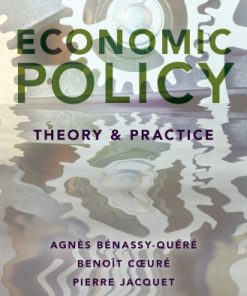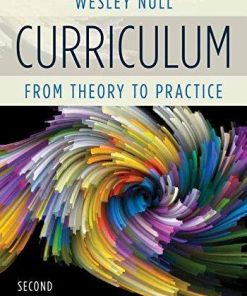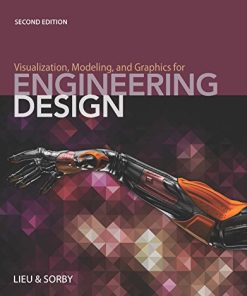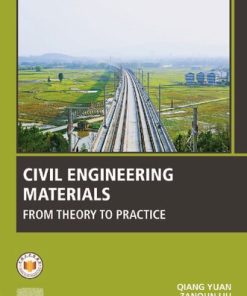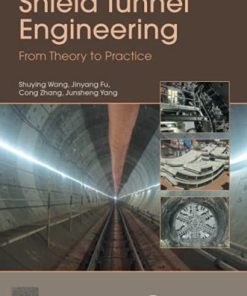(EBook PDF) Transportation Engineering Theory Practice and Modeling 2nd Edition by Dusan Teodorovic, Milan Janić 0323910416 9780323910415
$50.00 Original price was: $50.00.$25.00Current price is: $25.00.
Transportation Engineering: Theory, Practice and Modeling 2nd Edition by Dusan Teodorovic, Milan Janić – Ebook PDF Instant Download/DeliveryISBN: 0323910416, 9780323910415
Full dowload Transportation Engineering: Theory, Practice and Modeling 2nd Edition after payment.
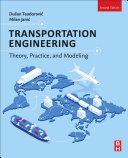
Product details:
ISBN-10 : 0323910416
ISBN-13 : 9780323910415
Author: Dusan Teodorovic, Milan Janić
Transportation Engineering: Theory, Practice and Modeling, Second Edition presents comprehensive information related to traffic engineering and control, transportation planning and evaluation of transportation alternatives. The book systematically deals with almost the entire transportation engineering area, offering various techniques related to transportation modeling, transportation planning, and traffic control. It also shows readers how to use models and methods when predicting travel and freight transportation demand, how to analyze existing transportation networks, how to plan for new networks, and how to develop traffic control tactics and strategies. New topics addressed include alternative Intersections, alternative interchanges and individual/private transportation.
Transportation Engineering: Theory, Practice and Modeling 2nd Table of contents:
Chapter 1: Introduction
Abstract
References
Chapter 2: Transportation Systems
Abstract
2.1: Background
2.2: History of Transportation
2.3: Transportation Sector and Transportation Modes
2.4: Characteristics of Transport Modes and Their Systems
2.5: Transportation Systems Topics: Planning, Control, Congestion, Safety, and Environment Protection
2.6: Problems
References
Websites
Chapter 3: Traffic and Transportation Analysis Techniques
Abstract
3.1: Object Motion and Time-Space Diagrams
3.2: Transportation Networks Basics
3.3: Optimal Paths in Transportation Networks
3.4: Mathematical Programming Applications in Traffic and Transportation
3.5: Probability Theory and Traffic Phenomena
3.6: Queueing in Transportation Systems
3.7: Simulation
3.8: MultiAttribute Decision Making Methods
3.9: Data Envelopment Analysis (DEA)
3.10: Computational Intelligence Techniques
3.11: Problems
References
Chapter 4: Traffic Flow Theory
Abstract
4.1: Traffic Flow Phenomenon
4.2: Measurements of the Basic Flow Variables
4.3: Vehicle Headways and Flow
4.4: Poisson Distribution of the Number of Arrivals and the Exponential Distribution of Headways
4.5: Normal Distribution and Pearson Type III Distribution of Headway
4.6: Speed-Density Relationship
4.7: Flow-Density Relationship
4.8: Speed-Flow Relationship
4.9: Fundamental Diagram of Traffic Flow
4.10: Shock Waves
4.11: Micro-Simulation Traffic Models
4.12: Car Following Models
4.13: Network Flow Diagram
4.14: Problems
References
Chapter 5: Capacity and Level of Service
Abstract
5.1: Introduction
5.2: Highway Capacity and Level of Service
5.3: “Ultimate” and “Practical” Capacity of Bus Stations
5.4: Rail Inter-Urban Transport Systems
5.5: Inland Waterway Freight/Cargo Transportation System
5.6: Maritime Freight/Cargo Transport System
5.7: Air Transport System
5.8: Problems
References
Websites
Chapter 6: Traffic Control
Abstract
6.1: Introduction
6.2: Traffic Control at Signalized Intersections
6.3: Alternative Intersections
6.4: Traffic Control for Arterial Streets
6.5: Area-Wide Traffic Control Systems
6.6: Traffic Control Signal Needs Studies
6.7: Intelligent Transportation Systems
6.8: Freeway Traffic Control
6.9: Transportation Demand Management
6.10: HOV Facilities
6.11: Highway Space Inventory Control System
6.12: Auctions
6.13: Rail Traffic Control
6.14: Air Traffic Control
6.15: Problems
References
Websites
Chapter 7: Public Transportation Systems
Abstract
7.1: Introduction
7.2: Number of Transported Passengers Versus Number of Served Vehicles
7.3: Urban Public Transit
7.4: Infrastructure of Urban Transit Systems
7.5: Public Transportation Availability
7.6: Passenger Flows in Public Transportation
7.7: Passenger Flows Along a Transit Line
7.8: Service Frequency and Headways
7.9: Timetable
7.10: Transit Line Capacity
7.11: The Performances of the Urban Transit Network
7.12: Public Transit Network Types
7.13: The Public Transit Network Design
7.14: Service Frequencies Determination in Transit Network
7.15: Vehicle Scheduling in Public Transit
7.16: Crew Scheduling in Public Transit
7.17: Disruption Management in Public Transit
7.18: Public Transit Planning Process
7.19: Shared Mobility
7.20: Interurban Road Transport Systems
7.21: Air Transportation
7.22: Air Transportation Networks
7.23: Flight Frequencies
7.24: Airline Transport Work and Productivity
7.25: Fleet Size
7.26: Level of Service
7.27: Airline Scheduling
7.28: Airline Schedule Planning Process
7.29: Airline Revenue Management
7.30: Problems
References
Chapter 8: Transportation Demand Analysis
Abstract
8.1: Introduction
8.2: Transportation Demand and Transportation Supply
8.3: Transportation Demand Modeling
8.4: Transportation Demand Forecasting Techniques
8.5: Four-Step Planning Procedure
8.6: User Equilibrium and System Optimum
8.7: Heuristic Algorithms for Finding User-Equilibrium Flow Pattern
8.8: System Optimal Route Choice
8.9: Price of Anarchy
8.10: Braess Paradox and Transportation Capacity Expansions
8.11: Dynamic Traffic Assignment
8.12: Transportation Demand Analysis Based on Discrete Choice Models
8.13: Logit Model
8.14: Application of the Computational Intelligence Techniques for the Prediction of Travel Demand
8.15: Activity-Based Travel Demand Models
8.16: Problems
References
Chapter 9: Freight Transportation and Logistics
Abstract
9.1: Logistics Systems Basics
9.2: Road Freight Transport Infrastructure
9.3: Service Networks of the Road Freight Transport Operators
9.4: City Logistics
9.5: Basics of Location Theory
9.6: Vehicle Routing and Scheduling
9.7: Problems
References
Website
Chapter 10: Transport Economics
Abstract
10.1: Introduction
10.2: Definition of the Main Terms
10.3: Transportation Projects Evaluation
10.4: Cost-Benefit Analysis
10.5: Infrastructure Cost
10.6: Operating Costs and Revenues
References
Websites
Chapter 11: Transportation, Environment, and Society
Abstract
11.1: Introduction
11.2: Categorization and Modeling Impacts
11.3: Road-Based Systems
11.4: Rail-Based Systems
11.5: Water-Based Systems
11.6: Air-Based Systems
11.7: Costs of Impacts—Externalities
References
Website
Chapter 12: Resilience of Transport Systems
Abstract
12.1: Introduction
12.2: Reliability, Resilience, Robustness, and Vulnerability of Engineering Systems
12.3: Reliability, Resilience, Robustness, and Vulnerability of Transport Systems
12.4: Indicators of Performances for Estimating Reliability, Resilience, Robustness, and Vulnerability
12.5: Examples of Estimating Reliability, Resilience, Robustness, and Vulnerability
12.6: Contingency Measures and Disruption Management
12.7: Comparing Reliability, Resilience, Robustness, Vulnerability, and Sustainability of Transport Systems
12.8: Problems
People also search for Transportation Engineering: Theory, Practice and Modeling 2nd:
transportation engineering salary
transportation engineering jobs
journal of traffic and transportation engineering
journal of transportation engineering
transportation engineering degree
You may also like…
Business & Economics
Uncategorized
Engineering
Visualization, Modeling, and Graphics for Engineering Design 2nd Edition – Ebook PDF Version
Engineering - Environmental
Engineering - Civil & Structural Engineering
Shield Tunnel Engineering: From Theory to Practice 1st Edition
Politics & Philosophy
International Practice Theory 2nd ed. Edition Christian Bueger





